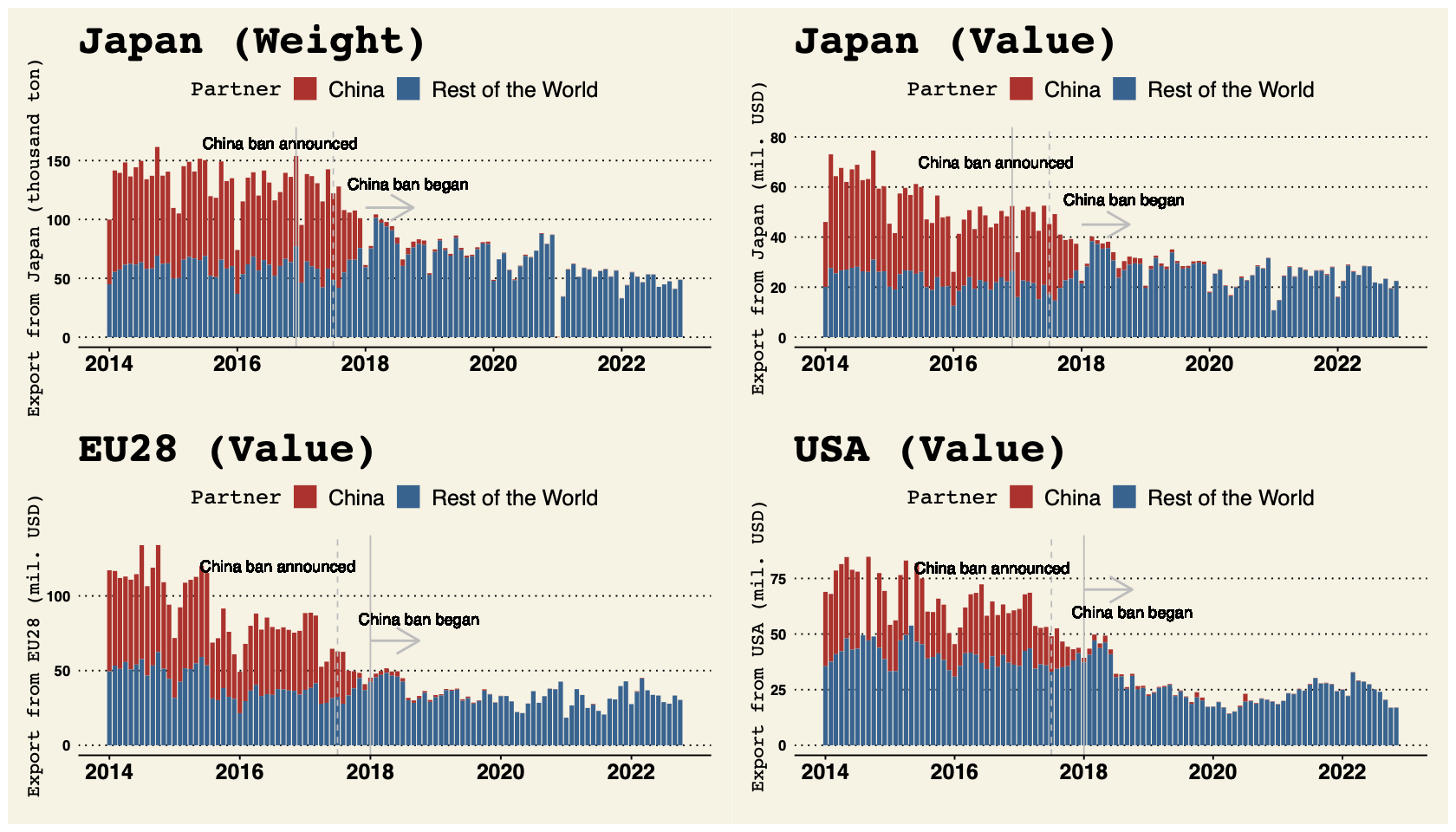Plastic waste after the China ban
04/152023
Author: Masashi Yamamoto
In the pre-COVID19 economy, even end-of-life products were traded worldwide under the influence of economic globalization. China's announcement that it would stop importing some waste materials at the end of 2017 came as a big surprise
It was well-known that most of the industrialized countries relied heavily on China for plastic recycling. Except PET bottles which contains relatively high added-value, recycling used-plastic (usually mingled with other materials) is too costly to run as a business in industrialized countries. Only solution was to export used-plastics to China where labor forces were cheap and additional resources were much needed.
 Fig. 1: Changes in used-plastics export from Japan, EU28 and the US
Fig. 1: Changes in used-plastics export from Japan, EU28 and the US
Source: UN Comtrade
Figure 1 shows the change in export of used-plastics from Japan, EU28 and the US to China and the rest of the world in the last nine years. China lost almost all the import since 2018 due to the import ban. The blue bars in Figure 1 show exports to countries other than China. Immediately after China's import ban began, exports to other countries temporarily increased, but have been on a downward trend since then. The reason for this is unknown, and may vary from country to country. Given that plastic production has not declined, it is an important research question to find out where the waste plastic that can no longer be exported to China has gone.
